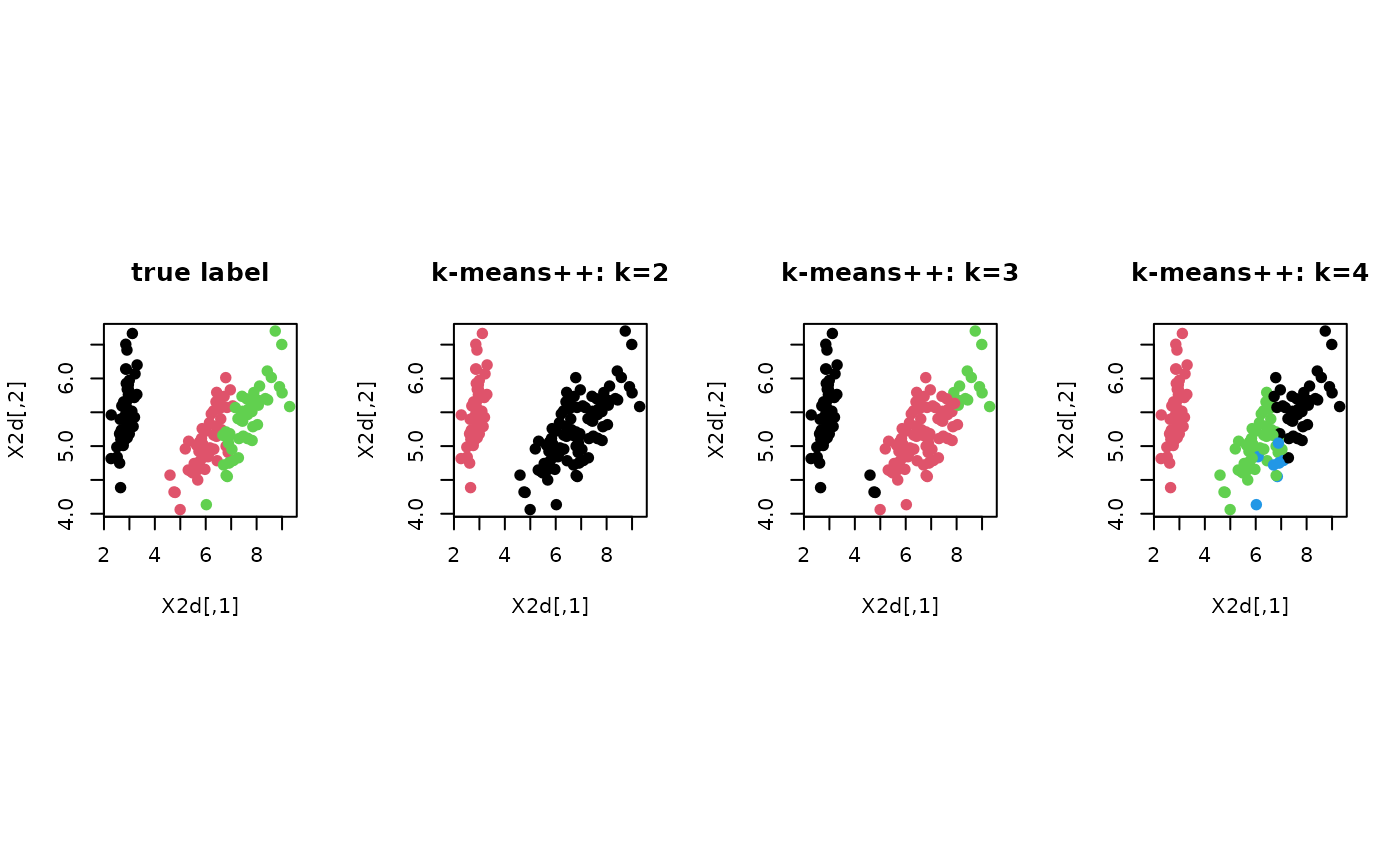\(K\)-means++ algorithm is usually used as a fast initialization scheme, though it can still be used as a standalone clustering algorithms by first choosing the centroids and assign points to the nearest centroids.
kmeanspp(data, k = 2)
Arguments
| data | an \((n \times p)\) matrix of row-stacked observations. |
|---|---|
| k | the number of clusters (default: 2). |
Value
a named list of S3 class T4cluster containing
- cluster
a length-\(n\) vector of class labels (from \(1:k\)).
- algorithm
name of the algorithm.
References
Arthur D, Vassilvitskii S (2007). “K-Means++: The Advantages of Careful Seeding.” In Proceedings of the Eighteenth Annual ACM-SIAM Symposium on Discrete Algorithms, SODA '07, 1027--1035. ISBN 978-0-89871-624-5.
Examples
# ------------------------------------------------------------- # clustering with 'iris' dataset # ------------------------------------------------------------- ## PREPARE data(iris) X = as.matrix(iris[,1:4]) lab = as.integer(as.factor(iris[,5])) ## EMBEDDING WITH PCA X2d = Rdimtools::do.pca(X, ndim=2)$Y ## CLUSTERING WITH DIFFERENT K VALUES cl2 = kmeanspp(X, k=2)$cluster cl3 = kmeanspp(X, k=3)$cluster cl4 = kmeanspp(X, k=4)$cluster ## VISUALIZATION opar <- par(no.readonly=TRUE) par(mfrow=c(1,4), pty="s") plot(X2d, col=lab, pch=19, main="true label") plot(X2d, col=cl2, pch=19, main="k-means++: k=2") plot(X2d, col=cl3, pch=19, main="k-means++: k=3") plot(X2d, col=cl4, pch=19, main="k-means++: k=4")
